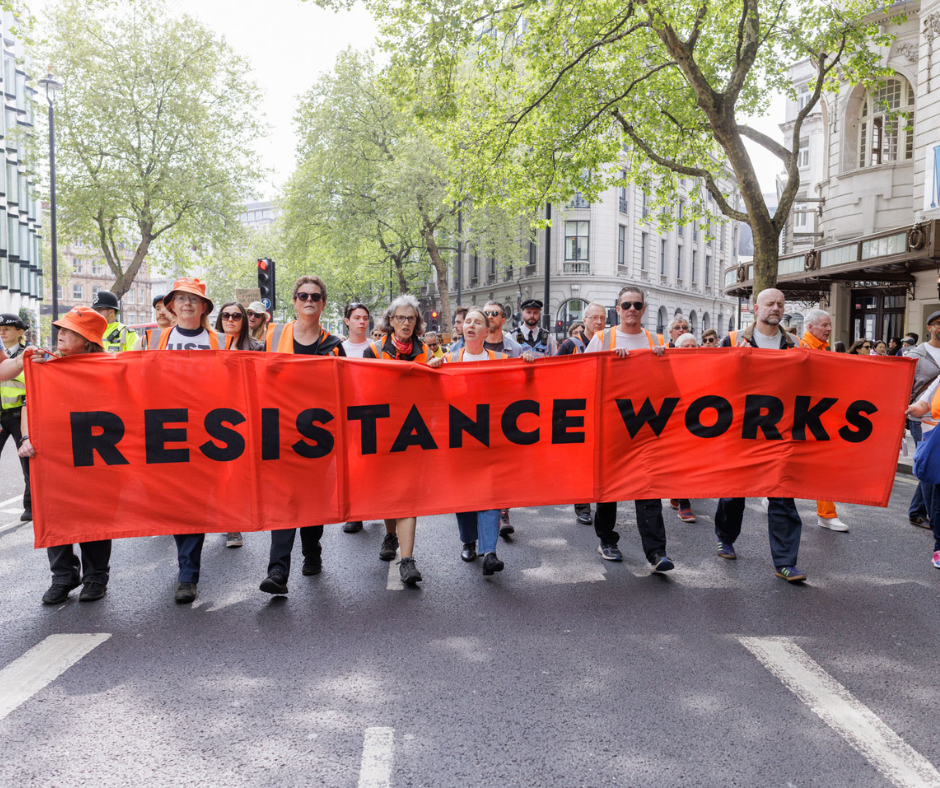The dust has just about settled since Labour’s ‘golden nuclear moment’ laid out by Rachel Reeves in her recent Spending Review. Plans for the monstrous Sizewell C took another step forward, nudged along by the offer of another £14.2 billion of taxpayers’ money, together with a further £2.5 billion promised for Small Modular Reactors, and roughly the same amount for fusion, the nuclear industry’s very own black hole.
So loud were the fanfares, so overblown the hype, that the real story of that week got lost. EDF’s deeply ingrained habits of secrecy and deceit were – yet again – exposed to the harsh light of a Freedom of Information request from the indefatigable Together Against Sizewell C (TASC).
One of the principal concerns that TASC has doggedly pursued over the last few years is the vulnerability of Sizewell C being built on one of Europe’s most rapidly eroding coastlines and its lack of resilience to the impacts of climate change. The evidence regarding future sea level rise goes from deeply worrying to totally terrifying – with the very real possibility of at least a 1 metre rise – and possibly as much as 2 metres – by 2100.
Given that the spent fuel used at Sizewell C throughout its operating life (around 4,000 tonnes) will need to be stored on site until at least 2160 this is clearly a matter of the greatest concern.
The UK Government is now in charge of this mega-project (in the shape of Sizewell C Ltd), with EDF doing everything it can to minimise its remaining stake. But EDF was still in charge when the planning application was being processed.
Through its Freedom of Information request, TASC has discovered that EDF was very aware of these deeply disturbing flooding risks as far back as 2015 – and had considered the possibility of needing to build two additional sea defences over and above agreeing to build the power station on a raised platform of 7.3 metres, as well as installing massive stone walls as sea defences on the site’s eastern and northern flanks.
One can only imagine how we arrived at a situation where two huge sea defences needed to prevent the Sizewell C site from flooding in an extreme sea level rise scenario were excluded from the planning application by EDF. Possibly at a meeting that went something like this….
MINUTES OF THE MEETING OF THE ONSHORE COASTAL DEFENCES SUB-COMMITTEE OF THE RISK MANAGEMENT COMMITTEE, December 2019
Present: Committee Chair; Head of Engineering (HE); Head of Sustainability (HS)
HE: Reminded colleagues of the current situation: whereas the full extent of the raised nuclear platform and the offshore eastern flood defences have been discussed at length with regulators and will be incorporated into planning documentation and the Development Consent Order process, the situation with the two proposed additional sea defences, labelled as ‘overland flood barriers’, remains highly problematic. A decision was taken at the meeting of the Risk Management Committee not to go public with these proposals, a decision which now needed to be confirmed at this meeting.
CHAIR: It might be helpful to remind us about these proposals, which as I understand it, are only illustrations on a map with not even an outline design at this stage nor any detailed costings?
HE: I must emphasise that we are being ultra-cautious here: the probability of a major flooding event from onshore has been assessed as ‘extremely low’. We can say that with total confidence today, but what the situation may be in 100 years or more, is obviously a rather different story. Moreover, if we were to proceed with the overland flood barriers, it would be a massive and extremely costly engineering project, likely entailing very significant environmental impacts.
HS: Forgive me butting in, but I thought you had succeeded in finding ways of minimising those impacts?
HE: Unfortunately, that has not been possible. We’re talking about two 10-metre high barriers capable of withstanding the North Sea, the Southern barrier essentially stretching about 500 metres across the Sizewell Gap and the Northern barrier running from the boundary with RSPB Minsmere, through the SSSI, then inland for up to a kilometre to reach higher ground. We considered the alternative of raising the platform height but discounted that on cost.
CHAIR: So, there’s no concealing the fact that the environmental damage is likely to be massive?
HE: There is not. And this would come on top of the controversy that our existing flood defence plans are going to cause due to their encroachment onto the Heritage Coast. I think it’s fair to say that if we go public with this (as part of the necessary disclosures required through the regulatory and DCO processes) there would be a most god-awful fuss and it could weigh heavily against getting DCO approval. Although, I think the decision could still go our way as the government seems pretty desperate, but there can be no certainty of that.
HS: Can I be clear here: are you recommending that we keep this proposal secret even though we would appear to be persuaded, as engineers, that it is absolutely needed? Is there not a huge risk that this would somehow leak – and that we would then be facing a reputational meltdown?
HE: There is a risk of that, but we’ve pursued these investigations on a strictly limited, ‘need to know’ basis – hence the reduced representation on the Committee today.
CHAIR: I think we need you to spell this out.
HE: Well, we’ve discussed this at length, Chair, and we have a compromise proposal.
CHAIR: Which is?
HE: For the time being, we put everything on hold – now that all the other DCO design work has been done and given that no further resources will be required for this, for a long time. We make no reference to any of this in any of our ongoing discussions with regulators, or in any prepared submissions for the Development Consent Order. Assuming all goes well (in terms of both planning and financing) over the next few years, we can then bring the proposal back as and when it seems necessary.
CHAIR: do you really believe we can get away with that?
HS: as things currently stand, as and when that moment comes, we’ll be able to put forward these proposals as a supplementary amendment to the Development Consent Order. Yes, it will be controversial, but once Sizewell C is moving forward or operational, and we’ve already carried out the kind of massive development works that we’re planning, we believe that the proposal will be nodded through, irrespective of the environmental impacts. Also, I don’t believe protesters will have enough energy left for any further campaigning. Eventually, all these campaigns give up the ghost.
END OF MINUTES
After initially raising their concerns with the Dept. for Energy Security and Net Zero as far back as August 2024, TASC’s formal request to the Secretary of State for the Sizewell C planning permission to be either revoked or varied, so that the impact of the overland flood barriers is assessed as part of the project now, was refused. This left TASC with no choice but to challenge the Secretary of State’s refusal through the courts.
TASC have launched a Crowdfunder to raise the money to pay for their legal costs. If you would like to support their campaign, please visit TASC’s Crowd Justice page






